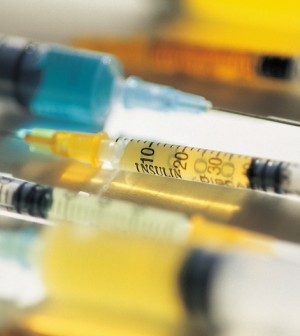Don't Miss
- Double Mastectomy May Offer No Survival Benefit to Women With Breast Cancer
- Toxic Lead Found in Cinnamon Product, FDA Says
- Certain Abbott Blood Sugar Monitors May Give Incorrect Readings
- Athletes Can Expect High Ozone, Pollen Counts for Paris Olympics
- Fake Oxycontin Pills Widespread and Potentially Deadly: Report
- Shingles Vaccine Could Lower Dementia Risk
- Your Odds for Accidental Gun Death Rise Greatly in Certain States
- Kids From Poorer Families Less Likely to Survive Cancer
- Tough Workouts Won’t Trigger Cardiac Arrest in Folks With Long QT Syndrome
- At-Home Colon Cancer Test Can Save Lives
Health Tip: Choosing a Food Thermometer
By LadyLively on October 15, 2013


Food thermometers are essential tools to help you cook food to the proper temperature, reducing your risk of foodborne illness.
The Academy of Nutrition and Dietetics offers information about the different types of food thermometers:
- An oven-safe dial thermometer gives a reading within a minute or two when inserted about two inches into food. It’s inserted at the start of cooking, and is best for deep casseroles or thicker meats, rather than thin dishes.
- An instant-read digital thermometer gives a reading in about 10 seconds, but isn’t designed to be used while foods are cooking.
- An instant-read dial thermometer gives a reading within 20 seconds and is most appropriate for deep dishes. It isn’t meant to be used during the entire cooking cycle.
- A pop-up internal thermometer often is inserted by the poultry producer, popping up when the food reaches the appropriate temperature.
- A fork/thermometer combination tool is useful for grilling. It should be inserted at least 1/4-inch into meat, and will give a reading in less than 10 seconds.
Source: HealthDay
Copyright © 2024 HealthDay. All rights reserved.










